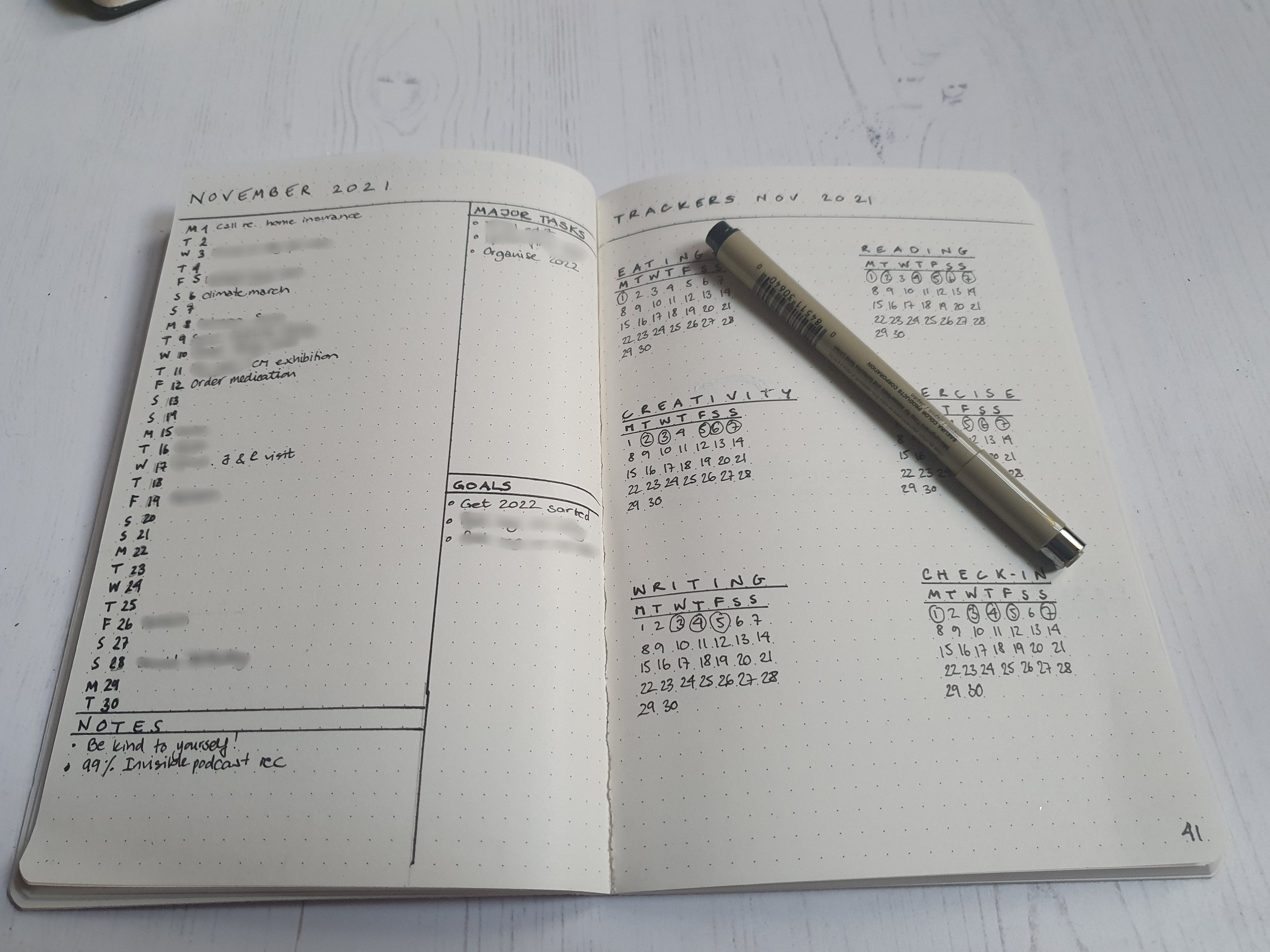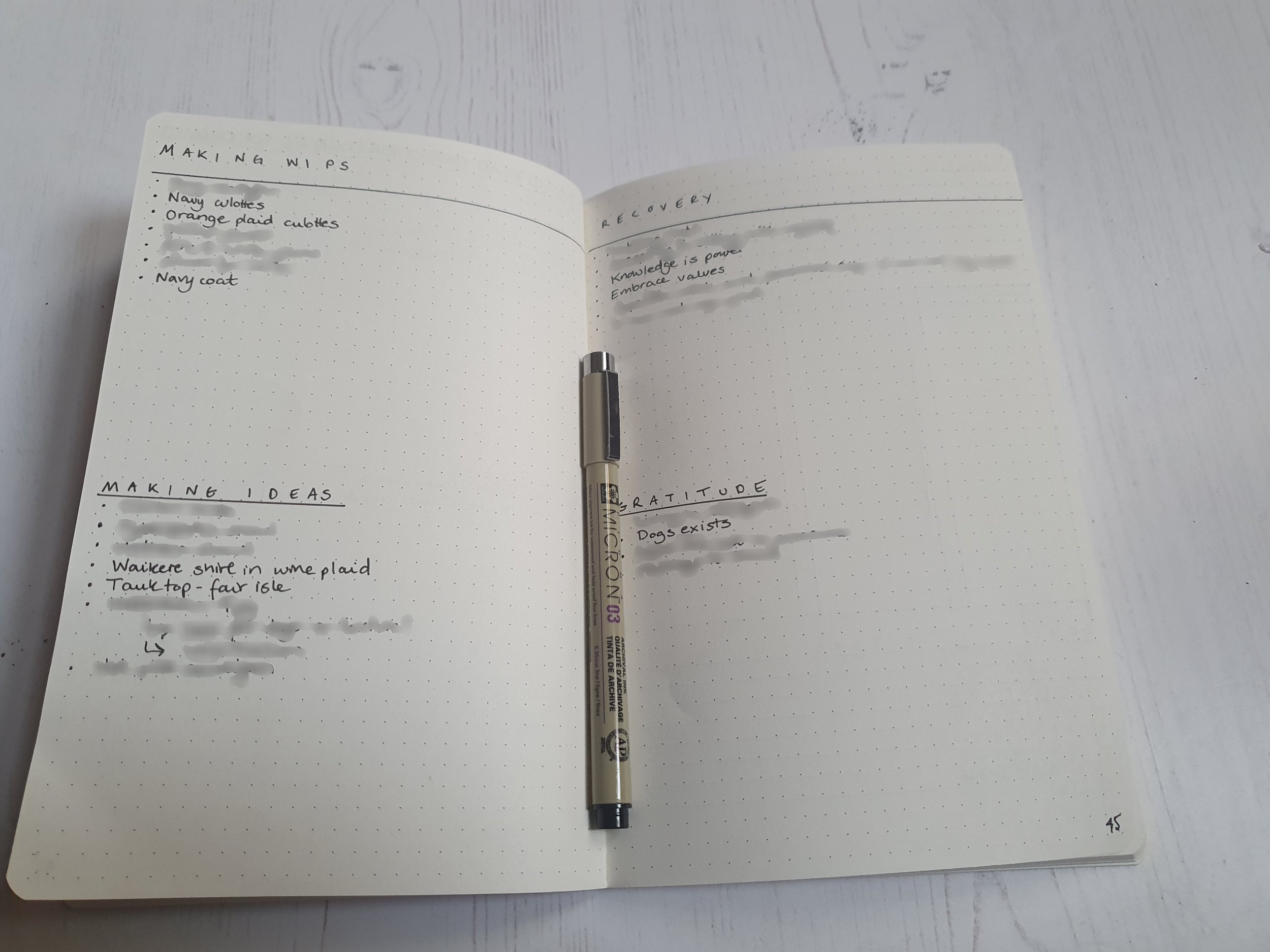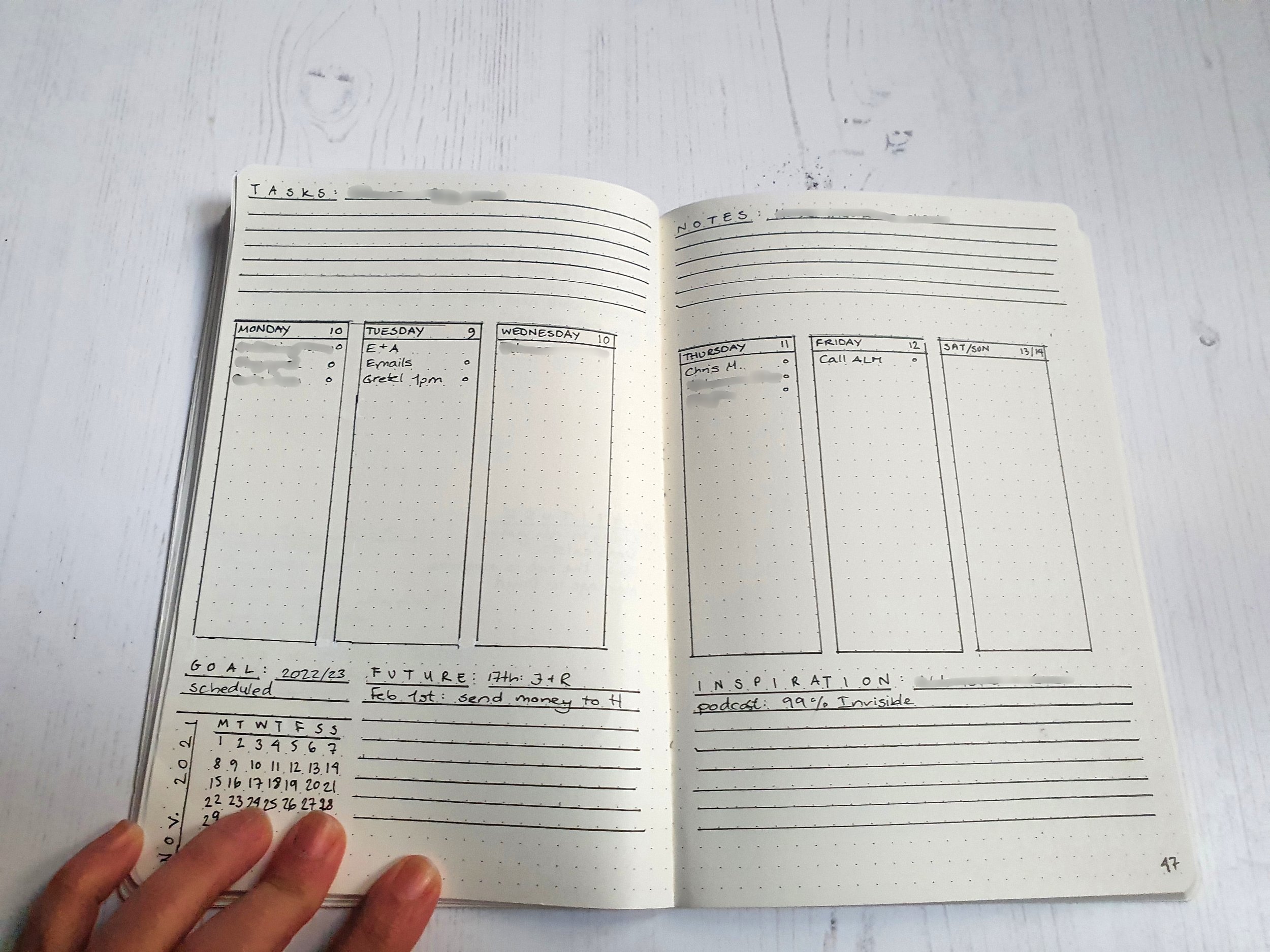Recently I mentioned on social media that I am a new convert to bullet journaling. My bullet journal keeps me organised, focused, and productive which is no mean feat. I am a one-woman business and as a result I have a long to-do list every day. I have tried a lot of things: wall planners, digital calendar reminders, traditional planners, and dozens of notebooks. The bullet journal is the best tool I have found, and I am deeply in love.
Let’s start with the basics: the bullet journal is an analogue method devised by NY-based designer Ryder Carroll. It’s a system for “tracking the past, organising the present, and planning for the future”. Here’s a short youtube video by Carroll himself if you want to know more about his ideas. You add pages according to your needs: someone might want to track their gains at the gym, while others want to keep track of their coffee purchases; some might need to co-ordinate school runs, while others need to outline study plans. It’s all individual and and it’s infinitely customisable.
Some want to use colours, stickers, washi tape or change their monthly layouts. I have opted to keep my bullet journal completely clean and sleek. I use a dotted A5 notebook and a black fine liner. My bullet journal is very minimal compared to most bujos you see on Instagram. This may come as a surprise because I am a creative person - but for me, the bullet journal is not a creative exercise in itself; the bullet journal is what makes me have time to be creative!
Here is what I do.
I used one page for the monthly log. Each day is marked with a letter (for the day of the week) and the date.
The monthly log is used for birthday reminders, the major tasks (like deadlines or teaching appointments), and social events. I have to pace myself with my social events, so it is really useful to see if I have to be social three days in a row or not! The monthly log is also great for establishing habits like going for a swim every Monday and Wednesday! On the right-hand side of the page, I log my major tasks and goals. At the bottom I have just enough space to add a few notes.
On the other side of the spread, I keep my trackers. I have trackers for eating-out (incl. coffee purchases!), reading, creativity, exercise, writing, and mental health check-ins. The trackers are not a tool for punishing myself (you haven’t exercised today!); they are a tool of kindness. For example, if I start feeling lethargic I can see that maybe I skipped out on my daily exercise for a few days. Aha!
The next spread I use sparingly, but it’s really good for keeping myself on track. The Brain Dump on the left-hand page is divided into two sections: work and personal. The work brain dump is used for thoughts I have about my work. It’s a space for clarification and reflection. At the end of each month I look back and see things are clearer or not. When I decided to retire from teaching face-to-face, that decision was made from thoughts I had jotted down in this section! The personal brain dump is used in the same way.
The right-hand side is a monthly check-in that draws upon what I’ve done in the previous sections. How am I feeling? Is that left knee still messing me up? It’s great for long-term evaluation of my general health. If I have to see a doctor, I can refer to my check-ins to see when I last had a cold or if I felt sadder during a specific time.
This spread I use a lot more (the photos are taken at the start of the month, so this spread will be full by the end of the month!).
The left-hand page is all about Making Stuff. I’m a creative person and I like to make stuff, both as part of work and in my personal life.
At the top, I have a list of all my works-in-progress: this both reminds me not to take on too many new things and also what things I am currently working on. My brain likes to forget that I already have a shawl on my needles, so I might cast on for another. I really like having this list in plain view.
And then I have a section with Making Ideas. The Making Ideas section is where the bullet journal really works for me as a tool. I have so many ideas and I needed a way to sift through them. This particular list is under the Monthly Log section. I have a corresponding page in my Weekly Log section (further on), and I jot down every single idea down in the Weekly one. As I move through the month, if an idea keeps popping up, then I transfer it to this Monthly Log section. I still log every single idea, but I can see which ideas feel substantial.
On the right-hand side, I have something which I might not need in the future, but which feels very relevant right now (did I mention I love how easy it is to customise a bullet journal?). I have a Recovery log and a Gratitude log. I am currently in trauma therapy, and the bullet journal lets me document my recovery. I also jot down tiny, good things under Gratitude. It is a great mental health tool, and one that would be easy to make into a full-page spread if I should need it.
My Weekly Log looks like this. This is the one spread that keeps me going throughout the week.
I have divided the spread into 6 columns - one for each day (Saturday/Sunday together). I’ll add tasks, events, and reminders as I need. Each day has a max of three major tasks or events, and then as many to-do tasks as I can manage. I cross out when I’m done with a task, and if I don’t manage to do it, I’ll move a given task to the next day. It’s really satisfying to see tasks move about and being “conquered.” It also let’s me see what’s feasible to do within a week, and I don’t take on too many tasks.
Something I really, really like about this spread: the tasks, goals, notes, future, and inspiration sections.
I fill out the Tasks at the start of the week, and then allocate them into the days. Goal is for keeping me focused. Future is a big picture reminder of things to come, events to prepare, and has a weird synergy with Goals for me. The Notes section is whatever pops up: a reminder to buy lightbulbs or maybe an address I need to use that week. Finally, Inspiration is a great little section. I add podcast recommendations there as well as mysterious notes to myself about awesome stuff I’ve seen or read.
This is what the spread looks like after I’ve begun filling it out. Over the week, this will be full of valuable information, productivity, and records of what I’ve been doing. It’s just one spread, but it works wonderfully well for me.
Now, I do have more pages set-up following the weekly spread, but they are the same basic set-up as the Monthly Log spreads. I have already mentioned the Making Ideas page that I set up weekly to catch all my ideas, but I also have a Quoted spread where I note down quotes from what I’m reading or hearing. I keep track of films, TV, and podcasts I listened to or watch. I might have a specific task that my therapist requires me to do, or I’m working out a specific knotty problem with my writing. They get pages too under my Weekly log.
A caveat: I do have two other journals. I have a reading journal where I log the books I read (currently at 87 books this years!). I also have a work-specific journal for my designing which contains sketches, hand-drawn charts, pattern notes, maths problems, and notes on yarn stash. Again, there’s synergy there between the Making sections in my main journal and the design journal: I can see the inklings of ideas starting in my bullet journal, I work out the practicalities in my design journal, and then later in the process I see the projects come back into my bullet journal as to-do tasks. It’s great.
There you have it. I’m a complete convert to bullet journaling, and it’s such a great tool that requires very little effort or skill to set up.
MATERIALS:
Pens: I use either Pentel Ultra Fine Liner S570 or Sakura Pigma Micron 03 - both in black
Journals: I use three different ones. Stationery Island A5 Dotted Notebook (reading), Moleskin A5 Squared Notebook (design), and Leuchtturm 1917 A5 Dotted Notebook (bullet journal).






